Invasive species like Melochia, Autograph, and Umbrella trees pose a big threat to natural habits. We cut those regularly so they don’t overtake the forest.
Invasive species spread fast and can take over native forests in only a few years, thereby posing a threat to native and endemic plants and animals. On Lauhalaland, some of those invasive species can be found, mostly Melochia, Autograph, and Umbrella trees.
We take care of our forest by physical control. We remove invasive trees manually and thereby try to contain their spread into the forest and its surroundings. We try not to use chemical solutions in order to prevent pollution.
Melochia (Melochia umbellata) is an invasive tree that can grow 6 to 45 feet high. It was introduced in the 19th century presumably as an agroforestry crop. Its seeds are wind-dispersed, so it can spread fast into natural habitats, taking over the local flora. the BIISC considers it a pest on Kauai, Oahu, Maui, and Big Island.
The autograph tree was imported to Hawaii almost 100 years ago as an ornamental plant. It uses other plants as hosts and once the roots are established, it can kill any host by strangulating it and cutting it off nutrients. The autograph can spread fast and overgrow huge patches, thereby posing a threat to Ohia, Hala and many other beautiful native trees. With its seeds being very attractive to birds, the autograph tree escaped cultivation fast. Physical control involves checking trees for young autograph trees and pulling them out if found, as well as constant cutting of adult trees.
The Trumpet tree (Cecropia obtusifolia) is another invasive pest that can be found on Lauhalaland. It was introduced about 100 years ago as a reforestation tree, but it soon became a pest soon after. According to BIISC it “Aggressively colonizes sites and produces dense thickets”, with one mature tree producing up to 900,000 seeds in just one year. Physical control is very work-intense as the stems grow multiple new branches and the cuttings need to be removed as waste to prevent vegetative reproduction.

